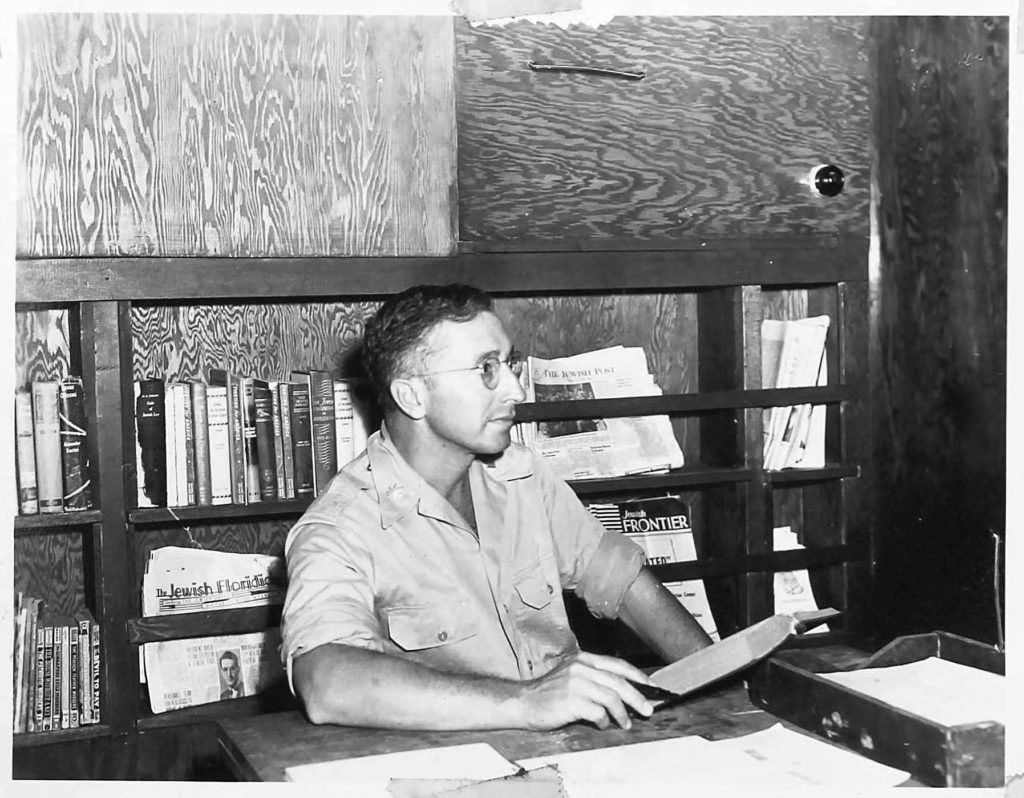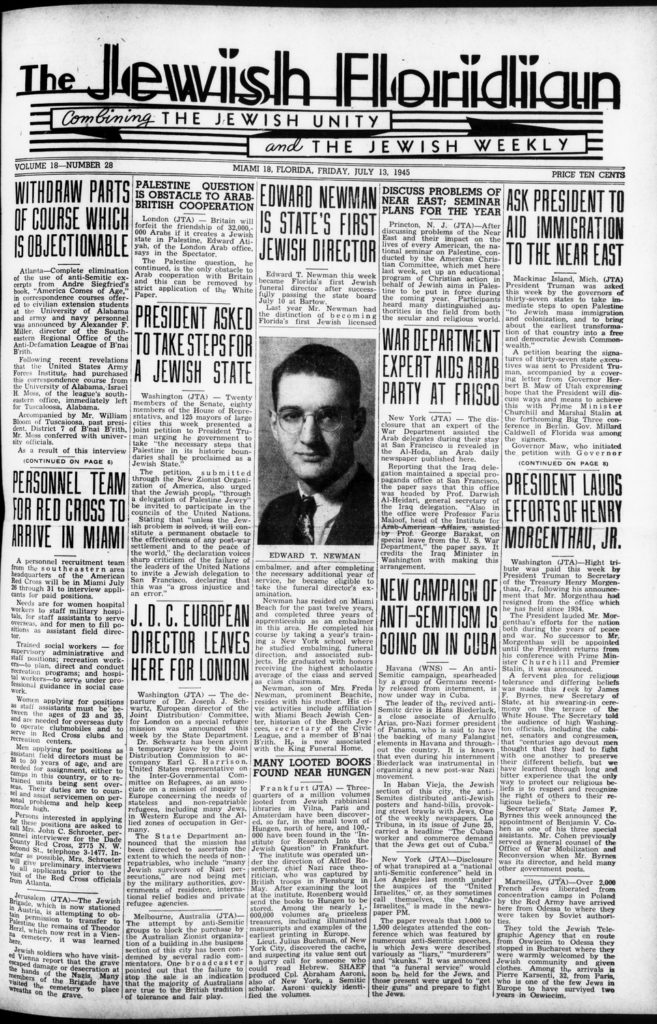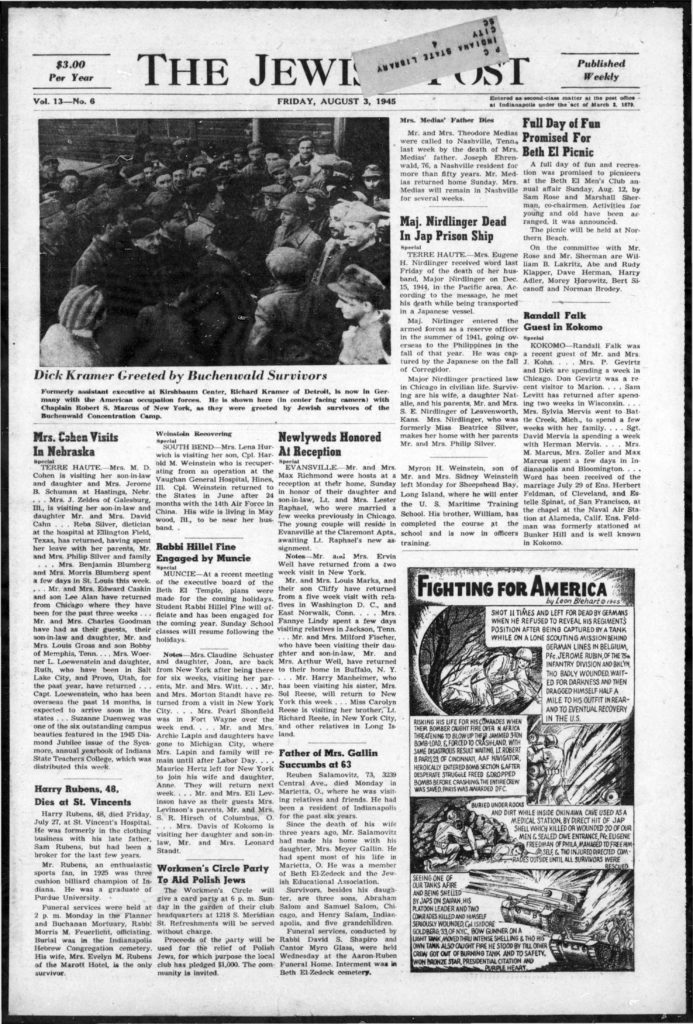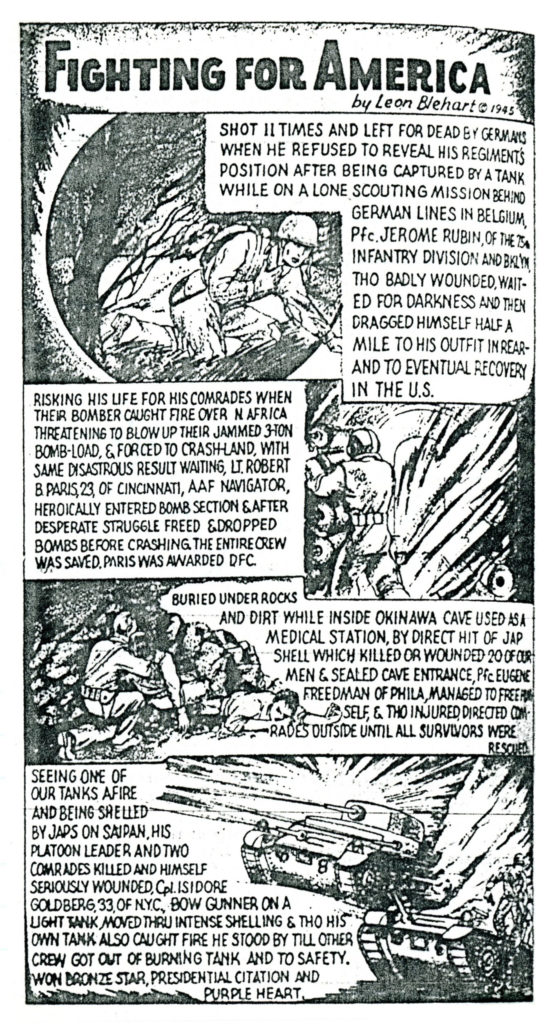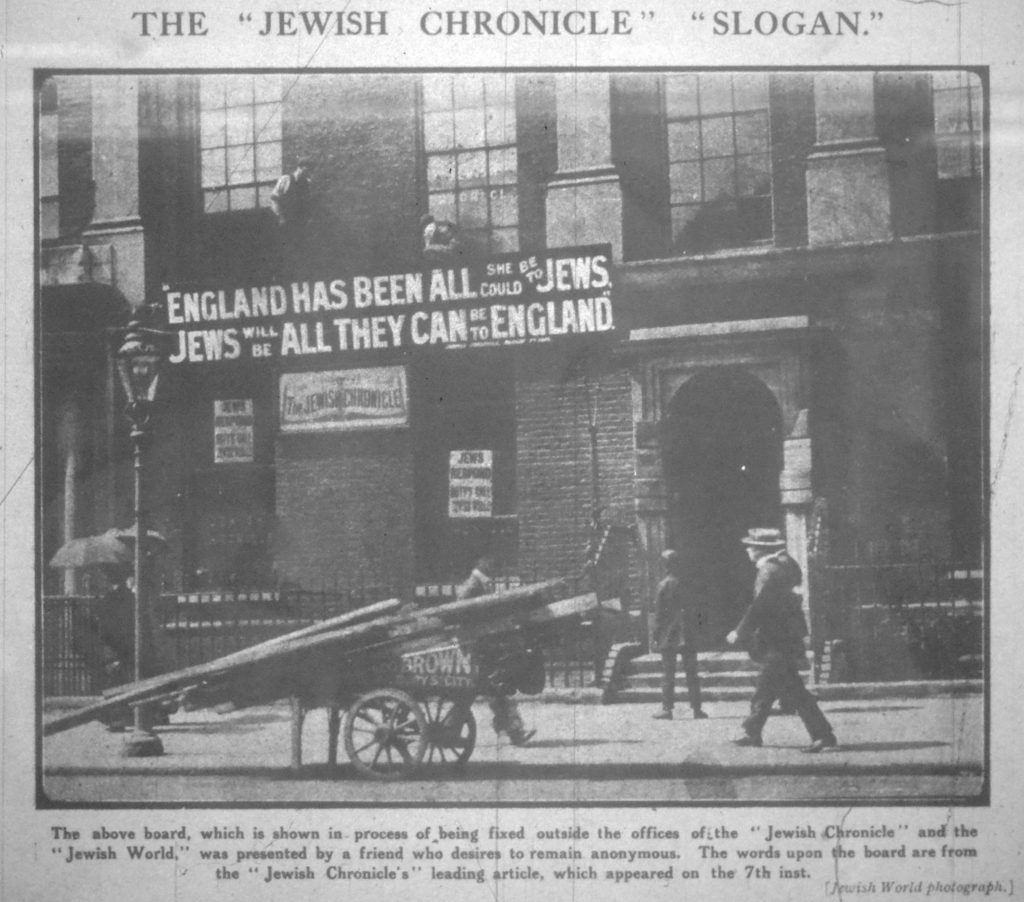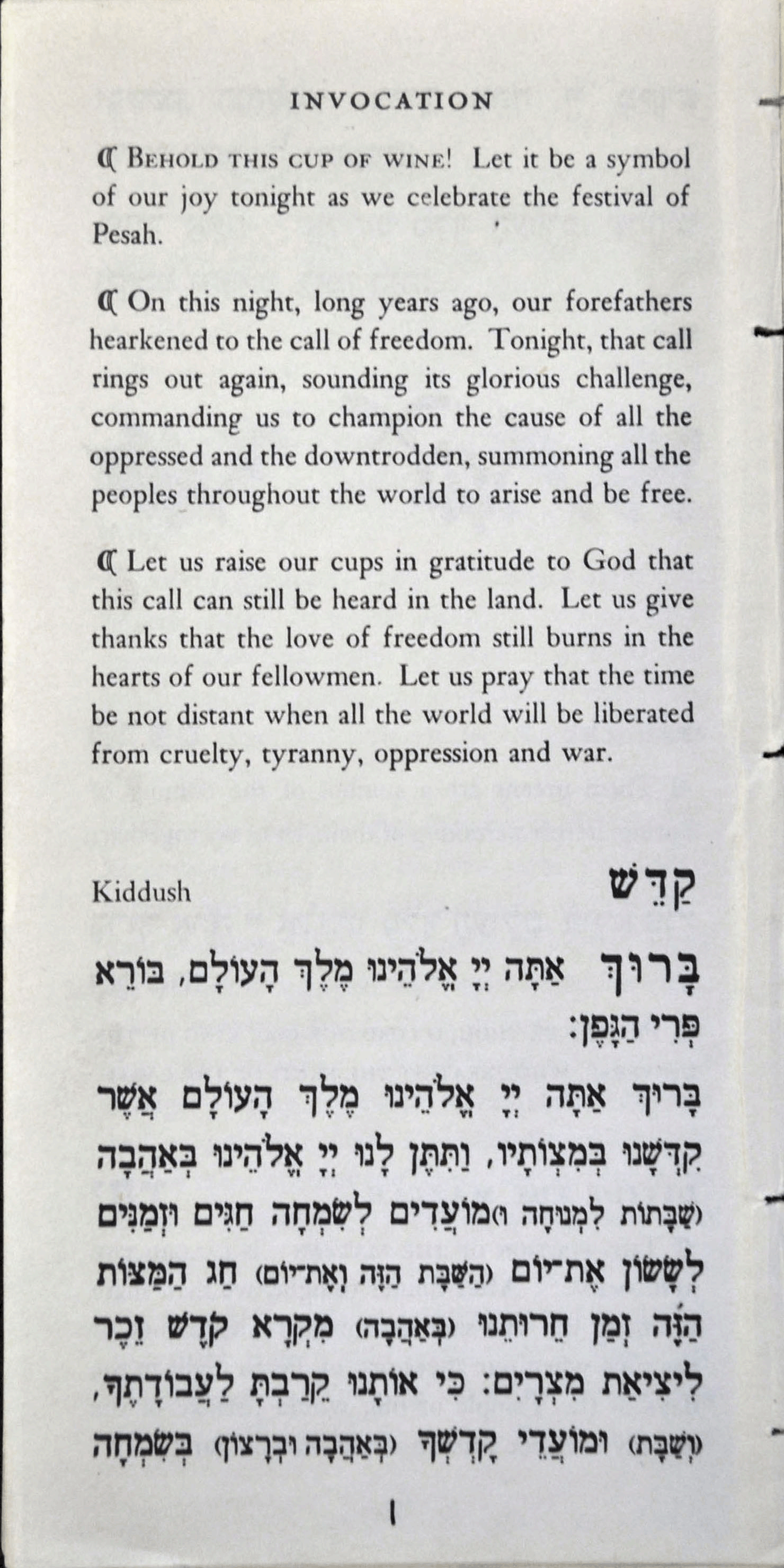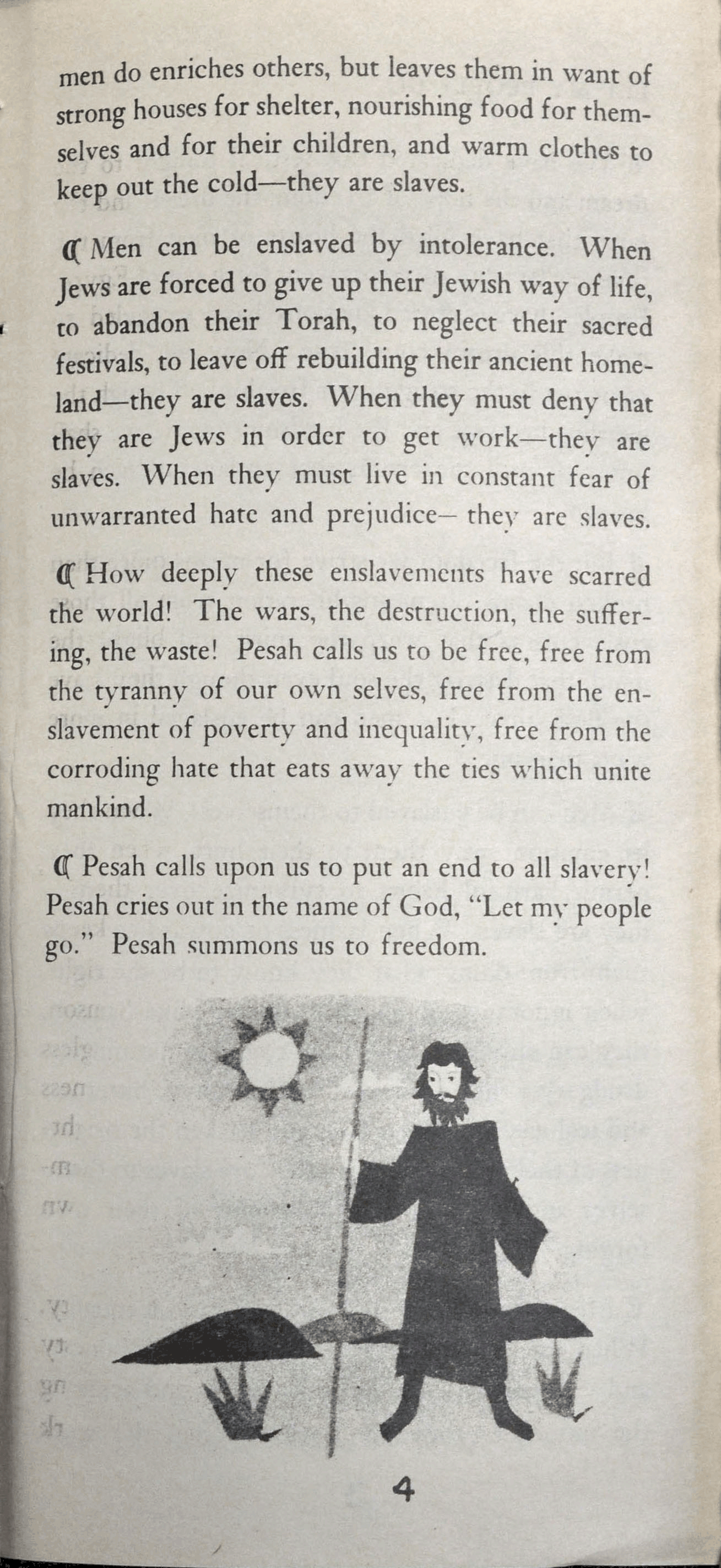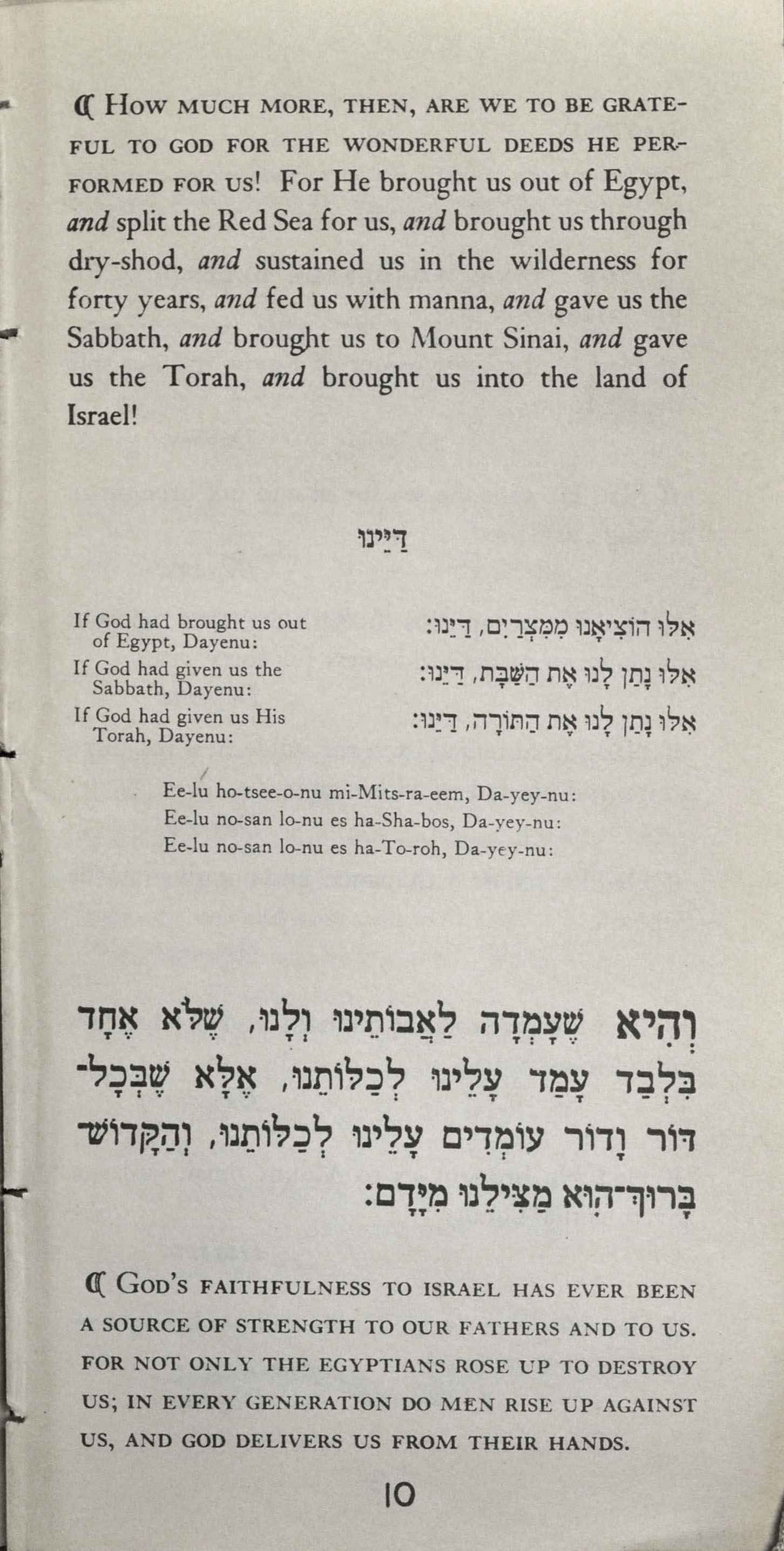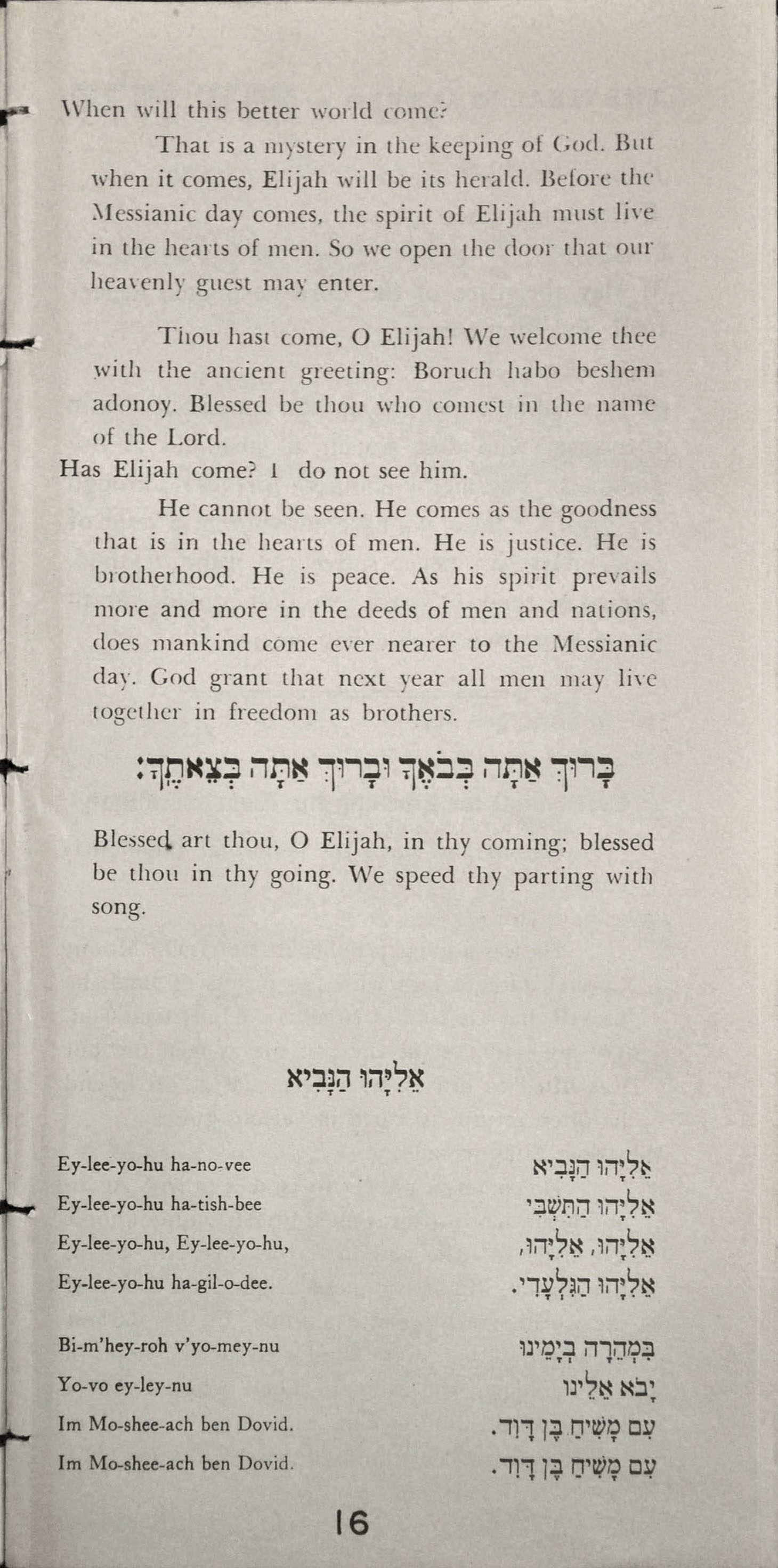As part of an effort to learn about Jewish military service in the First World War – “The Great War” as the conflict was known at the time due to its unprecedented, staggering scope and scale – I’ve done extensive research within periodicals published during that era by the Jewish and general press. This effort has been focused upon locating articles and news items covering Jewish military service, military awards received by Jewish servicemen, the experiences of Jewish civilians in various battlefronts (particularly Eastern Europe), casualty lists, and, more.
The periodicals I’ve researched in this endeavor are many and varied. Some can be accessed on the Internet, while others – to the best of my knowledge – have not been digitized, existing only as 35mm microfilm (remember film?!…) thus necessitating visits to the libraries or institutions having such resources in their holdings.
Prominent among the periodicals I’ve researched have been The Jewish Chronicle (London, England), its companion publication The Jewish World, and, The Jewish Exponent (Philadelphia, Pennsylvania).
Both the Chronicle and Exponent are still “going strong” in this year of 2017, over a century after the end of the Great War.
The Chronicle presents an invaluable picture of military service by Jews of the British Empire, presented in the wider context of British Jewry as a whole, set within the even larger scope of news about world Jewry.
The following article – based on an interview with Chaplain Michael Adler – appeared in the August 14 issue of The Jewish Chronicle, ten days after Britain’s entry in the war on August 4. In tone and spirit, the closing and opening paragraphs are reflective of and consistent with the patriotic ardor and enthusiasm permeating much of Europe – among both the Allies and Central powers – at the war’s very beginning. Reverend Adler, who passed away in 1944, was also responsible for the creation of the memorial / commemorative volume British Jewry Book of Honour, in 1922. More information about him can be found at Sarah Hurst’s blog post, A Chaplain in the Trenches.
The article is also available in PDF format via the link at the end of this post.
I hope to present further material relating to the Jewish military experience in WW I from later issues of the Chronicle, and other periodicals, in future posts.
________________________________________
Jews and the War
INTERVIEW FOR THE JEWISH CHRONICLE
WITH THE CHAPLAIN TO THE JEWISH TROOPS (the Rev. M. ADLER)
The Jewish Chronicle
August 14, 1914
THE Jewish manhood is responding with alacrity and enthusiasm to the call of England. Even the glowing fervor at the time of the Boer War is thrown into eclipse by the ardour that is being shown in these momentous days. There is not a Jew in this country who cannot tell of friends enlisted, of relatives enrolled in one or other of the British legions, of youthful zeal that will not be denied, of love of the Motherland exquisite in its tenderness, boundless in strength, unsurpassed in all the wonderful annals even of British loyalty and British enthusiasm.
These are early times to estimate the true muster of English Jews in this campaign. British born and foreign born, rich and poor, have answered with equal swiftness the summons to the colours. But, if ever the total is ascertained, it will form another unforgettable testimony to the spirit which wise and just government evokes in all the children of the realm.
The Chaplain to the Jewish troops, the Rev. Michael Adler, B.A., who has always thrown himself with enthusiasm into his work, is to-day a sort of human focus for the waves of patriotic eagerness that are sweeping the community, and to him many of the Jews under arms, from Hindustan to Aldershot, look for religious sustenance and moral inspiration. Mr. Adler is himself a captain in the Territorial Force (London and Eastern Command). He was at Deal with the Jewish Lads’ Brigade, and was about to go to the Territorial Camp at Wareham when the present storm broke over Europe. He now holds himself at the disposal of the General Officer commanding, to be attached to any military station where London Territorials are assembled, and will be heading as soon as the latter are at their respective stations – which will be very soon. It is possible that he will have to arrange for deputy chaplains in various parts of the country – probably in Lancashire and Yorkshire to begin with.
Jewish Lads’ Brigade Enlistments
In conversation with a representative of the JEWISH CHRONICLE, Mr. Adler commented on what he described as the very strong feeling of loyalty among English Jews. One pointed illustration of this which he gave is the fact that a number of officers and senior boys of the Jewish Lads brigade volunteered for service immediately on the Brigade returning to town last Tuesday week. Practically all were accepted.
But it is, of course, to the normally constituted forces of the Crown that we have to look for some more adequate representation of the numbers of Jews who are bearing arms in the present crisis, and of the Jewish elements in these. Mr. Adler gave an interesting account.
Jews in the Navy
“There are,” he said, “a dozen Jewish officers in the Navy. In regard to the men, the last official return gave the numbers of the Jews at about fifty. But if you multiply that figure by four or five you will get the more correct number, for I constantly hear of Jews entering themselves as of another creed. One interesting fact about the Navy is that it contains quite a considerable number of Jewish petty officers, including a warrant officer in the Marines. There is a Jewish warrant officer – M.M. Bright – who was originally a pupil of the Jews’ Free School, and was, at one time, in the Jewish Lads’ Brigade. He has been raised to commissioned rank, and it is worth noting that he is one of the ten in the entire Navy recently selected for promotion. He is now probably on active service. One Jewish warrant officer, named Pash, is warrant officer of signals on one of the super-Dreadnoughts. There are a Jewish major and captain of Marines and several Commandants, and others who may be mentioned here are Midshipman Charles Marsden (“St. Vincent”), and Claude Telfer (son of Mr. W.T. Leviansky), and F. Lowy (grandson of the late Dr. A. Lowy), of the Royal Naval Reserve.
“By the way, the medical officer of the Jewish Lads’ Brigade, Dr. L. Mandel, joined the Royal Navy as a doctor the day after the camp broke up.”
Jewish “Regulars”
What about the Jews in the regular army?
“I know of fifty-two Jewish ‘regular’ officers. They include among their number members of the Sassoon, Mocatta, Beddington, Halford, Solomon, Henriques, Sebag Montefiore, Seligman, De Pass, and other well-known Jewish families. Many of them will be in the Expeditionary Force.
“In regard to Jewish non-commissioned officer and men, the last official return dated October, 1913, put the number as 236. This figure, however, should be multiplied by three at least to arrive at the true total.
Jews in the Cavalry
“Since March last a system has been instituted at the military recruiting stations of notifying to the chaplain every professing Jew who enlists, and over fifty names have been sent in to me. In one week alone four Jews joined the 4th Hussars. There has, indeed, been a great tendency on the part of the Jews to enlist in cavalry regiments – a new feature in Jewish enlistment.
“Of course, in addition, a very large number of Jews in the Reserves have now returned to the Colours, but how many it is impossible to say.
Jewish Guardsmen
Do Jews figure to any extent in the Guards regiments?
“Well, there are Sergt. Instructor J.H. Levey of the Scots Guards; Sergt. M.J. Marks, of the 3rd Coldstreams; Sergt. Lewis, in Coldstreams, and Sergt. Rosenberg, of the 2nd Scots Guards, besides a large number of Jewish privates.
“It may truly be said that there is hardly a regiment in the Regular Army in which Jews are not represented, a number of the recruits of recent date having come from Leeds and Manchester.
“Jews are also represented in the Artillery. There are, for instance, Sergt.-Major Shapeere and Quartermaster-Sergt. F.J. Wooley, of the Royal Horse Artillery, to say nothing of a number of privates in that branch, as well as in the Royal Field Artillery and Royal Garrison Artillery. One Jews, a Canadian by birth, is one of the principal gun-layers of his battery.
Rothschilds in the Trenches
“There are seventeen Jewish reserve officers. And in addition I have ten names of Jewish Special Reserve officers. One of these, Lieutenant W. Stanford Samuel, 4th King’s Liverpool Regiment, has already written me to say that he has been ordered to the front. The last official return gave sixty-nine Jewish privates in the Special Reserve. For that too, must be considerably increased to give the true figure.”
There are, of course, many Jews in the Territorial ranks.
“I have the names of ninety-four officers, with ranks ranging from colonel to second lieutenant. Among these are the three sons of Mr. Leopold de Rothschild, viz, Mr. Lionel de Rothschild, M.P., Major in the Royal Bucks Yeomanry, and Mr. Evelyn and Mr. Anthony de Rothschild, who are lieutenants in the same regiment. Among other Jewish Territorial officers are Major F. Goldsmith, M.P. (Suffolk Yeomanry), Col. Claude Beddington (Westmoreland Yeomanry), Lieut. Sir Philip Sassoon, M.P. (Royal East Kent Yeomanry), and Mr. Robert M. Sebag-Montefiore, a captain in the last-cited regiment; other Jewish Yeomanry officers are Major H. Weinberg (City of London Yeomanry), and Lieuts. Reginald and Desmond Tuck (3rd City of London Yeomanry). The latter are the sons of Sir Adolph Tuck.
“In the Artillery, there are Col. H.D. Behrend; Major E.G. Heilbron, and a number of other officers; and, in the Engineers, Col. De Lara Cohen, on reserve. Major R.Q. Henriques, and Capts. R.H. Joseph and G.C. Kennard, Col. H.M. Jessel, M.P., is Hon. Commander of the 1st Royal Fusiliers, Major J. Waley Cohen belongs to the 16th Queen’s Westminsters, Major F.D. Samuel to the 3rd Royal Fusiliers, and Major S.S.G. Cohen to the 5th Liverpool Regiment.
Well Known Names
“Among others that may be mentioned are Lieut. Lionel L. Cohen, son of Mr. Leonard Cohen, and Lieut. Leonard G. Montefiore, son of Mr. Claude G. Montefiore. In the 6th Regiment City of London are five Jewish officers – Capts. G.A. Myer, M.H. Schwersee, and E.L. Phillips, Lieut. H.D. Myer, and Second Lieut. J.E. Lowy (grandson of the late Dr. Lowy). In the 4th Royal West Kent Regiment are two sons of the late Sir B.L. Cohen – Capt. Sir Herbert Cohen, Bart., and Capt. A.M. Cohen. In the 7th London Regiment are Capt. C.D. Enoch and Lieut. F.M. Davis (son of Mr. Felix Davis). In the 16th Queen’s Westminsters, besides Major Alfred Waley Cohen, are Capt. J. Henriques, and Lieut. E.G. Waley (son of Mr. Alfred Waley). In the 19th County of London there are four Jewish officers – Capt. Edgar J. Davis, and Lieuts. L.J. Davis, J. de Meza, and J. Lumley Frank.
In the Provinces
“The Provinces are further represented by Lieut. Col. S.L. Mandelberg (Manchester), Capt. J.M. Heilbron (Glasgow), Lieut. J.M. Goldberg (6th Welsh Regiment), Lieut. L.G. Harris (7th West Riding), Lieut. J.B. Brunel Cohen, son-in-law of Sir Stuart Samuel, M.P. (5th Liverpool Regiment), and Capt. N.J. Laski (6th Lancashire Fusiliers).
Jewish “Terriers”
What of the Jewish privates in the Territorial ranks?
“As regards the men, it is impossible to estimate the exact total of Jews. But of London men alone I receive official returns for the last military service of some 400 names, representing practically every unit in the London command. In the 4th Fusiliers there were 36 Jews, and many of the other regiments had long lists. In the country, too, there are a very large number of Jewish Terriers. At the last Territorial camp of the London regiments held on Salisbury plain in August of last year, 90 Jewish officers and men attended parade for service.
“Then there is one specifically Jewish voluntary aid detachment, under the charge of Dr. Myer Dutch, the duty of which is to act as nurses to the Territorial Force.” An appeal, in this connection, appears in another column.
Volunteers
A great many Jews are volunteering for service in the present emergency.
“I have reason to believe that a very large number of Jews have been accepted. I have received a number of communications from coreligionists who are anxious to join, whether as officers or privates. There is also soon to be a great number of Jews in the Colonial contingents.
“In short,” added the Chaplain, in conclusion, “there has been a great outburst of enthusiasm among Jewish young men everywhere.”
It is a tribute to the wisdom of Britain – and the fortitude of a people which, whatever its faults, does not number among them ingratitude to its friends.
The Jewish Chronicle, August 14, 1914: Jews and the War

